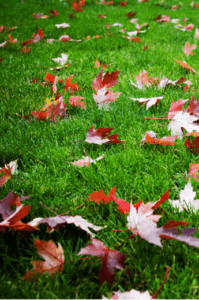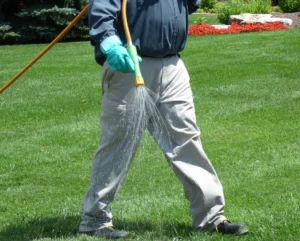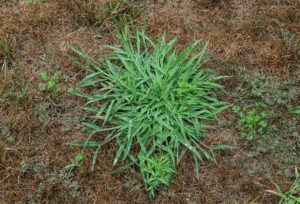When Should I Start Mowing My Lawn In Spring?
As Winter ebbs and there is a palatable feeling that Spring is on the way, many homeowners think about getting out there and mowing the lawn. After all, Winter can leave the grass brown, damaged and to be honest, unsightly.
While it makes sense to clean up the debris and lightly rake-off dead, matted grass, mowing too soon can be a mistake. For starters, early mowing usually means mowing through wet, even muddy turf. Often, water from melting snow and spring rains literally sit on top of the frozen lawn, waiting for warmer weather to raise soil temperatures and allow the water to move downward, into the soil, enhancing spring growth.

In addition, mowing wet, soggy turf can create ugly ruts and tracks that don’t disappear for weeks.
Mowing too soon, before the turf grass has begun to grow and thicken up, exposes the soil and over-wintering weed seeds to sunlight. Warmed by the sun, weeds germinate and grow rapidly, invading otherwise weed-free turf and resulting in a what can be a weed control problem for months. The weeds are simply outgrowing the still sleeping turf grass.
How to Mow Your Lawn During Spring
When you do decide it’s time to mow, usually not before late March in the northern two thirds of the country [earlier farther south], it makes sense to move the cutting height to the highest setting. Your objective is to remove dead, matted grass and debris, while leaving a canopy of grass blades over the soil, covering weed seeds. It is not a bad idea to then lower the mower by one setting and mow the lawn again to remove the old, desiccated grass blades. This allows sunlight to reach the soon to be growing grass.
How Often Should I Mow My Lawn in The Spring?
At first, mowing every two weeks may well be sufficient. As the grass begins to turn green and grow, move to a weekly mowing schedule and reduce mowing heights to 3.0 to 3.5 inches for cool season grasses and 2.0 inches for warm season grasses like Bermudagrass. Fast growing grass, mowed at no less than 3.0 inches, will inhibit weed populations from taking over the lawn.


Join Our Free Lawn Care Newsletter
Stay Up to Date With The Latest News & Updates
* We don’t share your info with anyone ever.






